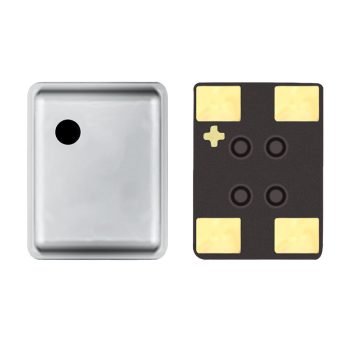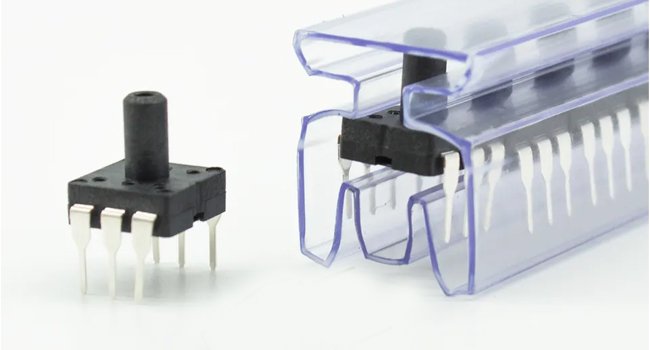Catalog
Introduction to Pressure Sensors
Pressure sensors are crucial components in various industries, including automotive, industrial automation, consumer products, and medical devices. The global pressure sensor market is projected to reach nearly $24.5 billion by 2028, reflecting their increasing importance in modern technology1. Pressure sensors operate based on the principle of force applied over an area, which is essential for understanding their applications and functionality.
Understanding MEMS Technology
MEMS (Micro-Electro-Mechanical Systems) technology is pivotal in the development of pressure sensors. MEMS sensors feature an elastic silicon diaphragm, which allows them to undergo repeated pressure cycling without altering their properties. This elasticity is beneficial as it minimizes hysteresis and creep, common issues in other sensor types
Advantages of MEMS
Cost Efficiency: Thousands of sensors can be produced on a single wafer, significantly reducing costs.
Design Flexibility: Having an in-house wafer fab allows for better control over the supply chain and design customization.
Reliability: MEMS sensors are free from hysteresis and creep, ensuring consistent performance over time
Piezoresistive vs. Piezoelectric Sensors
Piezoresistive Sensors
Piezoresistive sensors operate by measuring changes in electrical resistance when subjected to pressure. They are known for their repeatability and versatility, making them suitable for various applications, including medical procedures like angioplasty
Piezoelectric Sensors
Piezoelectric sensors generate an electric charge in response to mechanical stress. They are commonly used in applications requiring high sensitivity to vibrations and forces, such as in accelerometers and load sensors
For more guidance on piezoresistive vs. piezoelectric sensors, check out this article link:https://wfsensors.com/blog/use-and-function-of-mems-piezoresistive-pressure-sensorscomprehensive-guide.html/
Applications of Pressure Sensors
Pressure sensors are used across multiple industries:
Automotive: For engine management and safety systems.
Diving: To monitor depth and ensure safe ascent and descent times.
E-bikes: Integrated into shocks and tires to enhance performance.
Medical: In procedures like angioplasty to monitor balloon inflation
MEMS Pressure Sensors: Design and Functionality
Absolute Sensors: Measure pressure relative to a vacuum reference.
Gauge Sensors: Measure pressure relative to atmospheric pressure
Types of MEMS Pressure Sensors
MEMS pressure sensors feature a Wheatstone bridge diffused into a silicon diaphragm. The output change from this bridge corresponds to changes in applied pressure. The diaphragm’s thickness is adjusted based on the required pressure range
Factors Influencing Pressure Sensor Accuracy
Accuracy in pressure sensors is crucial, especially in applications requiring precise measurements. Factors influencing accuracy include:
Temperature: Changes in temperature can affect sensor sensitivity and resistance.
Stress: External stresses during packaging can impact sensor performance over time
Achieving Accuracy
Calibration: Essential for ensuring accuracy.
Compensated Sensors: Use onboard ASICs to simplify calibration and improve accuracy
Selecting the Right Pressure Sensor
When choosing a pressure sensor, consider the following factors:
Pressure Range: Ensure the sensor can handle the required pressure range.
Environmental Conditions: Consider temperature, humidity, and potential stressors.
Application Type: Determine if an absolute, gauge, or differential sensor is needed
Conclusion
Pressure sensors, particularly those utilizing MEMS technology, play a vital role in modern industries. Understanding the differences between piezoresistive and piezoelectric sensors, as well as the design and functionality of MEMS sensors, is essential for selecting the right sensor for specific applications. By considering factors like accuracy, environmental conditions, and application type, users can ensure optimal performance and reliability in their systems.
Actionable Advice
Assess Your Needs: Determine the pressure range and environmental conditions for your application.
Choose the Right Sensor Type: Decide between piezoresistive and piezoelectric based on your application’s requirements.
Consider Calibration: Ensure your sensor is properly calibrated for accurate measurements.
By following these steps and understanding the principles behind pressure sensors, you can effectively integrate them into your projects and achieve reliable results.
The above introduction only scratches the surface of the applications of pressure sensor technology. We will continue to explore the different types of sensor elements used in various products, how they work, and their advantages and disadvantages. If you’d like more detail on what’s discussed here, you can check out the related content later in this guide. If you are pressed for time, you can also click here to download the details of this guides air pressure sensor product PDF data.
For more information on other sensor technologies, please visit our sensors page.



